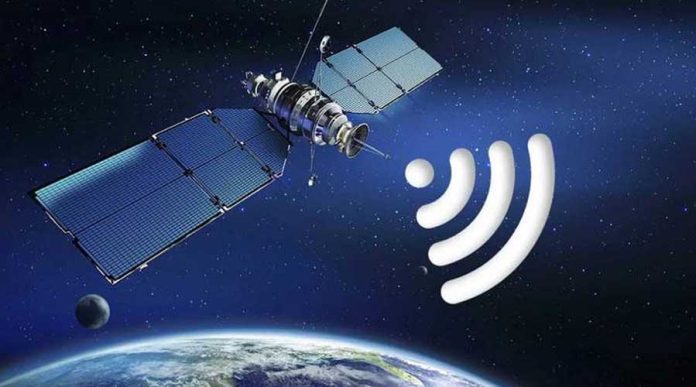By Girish Linganna
Information transmission isn’t confined to just cables; it also traverses through the air and space. This method offers robustness in scenarios where cables might malfunction and ensures connectivity to remote locations that are difficult to link. For regions of the world that are challenging to connect, satellites offer a viable solution.
Elon Musk’s Starlink has successfully placed 5,288 satellites into orbit and has received approval to launch thousands more by 2031, aiming for a total of 42,000 satellites, according to Musk. The service boasts over 2 million subscribers. Meanwhile, Jeff Bezos’s Amazon is preparing to deploy 3,236 satellites through its Project Kuiper initiative. OneWeb, a UK-based firm, currently has nearly 650 satellites circling the earth. The race for satellite-based connectivity is heating up, with nations such as China also pursuing their own satellite networks.
Satellites positioned in low-Earth orbit (200 to 2000kms above the earth), mere hundreds of kilometres from the Earth’s surface, provide significantly faster and more dependable connections than older satellite technologies—sufficiently robust to enable Netflix streaming in a remote mountain cabin, though not as rapid as fibre-optic cable connections.
However, satellites orbiting in Low Earth Orbit zip through the sky quickly, as seen by someone on the ground, quickly coming into and then leaving the range of receivers on Earth. This implies that satellite systems in low-Earth orbit need antennas that can follow satellites as they move across the sky, detecting when one satellite is going out of range and identifying another satellite entering the area. Software needs to continuously manage these transitions so that the user experiences no interruption in service.
Satellite service is still expensive, and in poor, remote areas, financial help is needed to get access. However, this might change because rich people who love rockets and space are sending up more satellites.
Having this backup is crucial if the traditional wired system faces issues due to climate change, political unrest, or war. Intense bombing by Israel led to major internet outages in Gaza. Meanwhile, Ukraine’s military has relied on Starlink for communication in its conflict with Russia.
However, conflicts have sparked concerns about the consequences of internet access being dominated by a single individual with personal business stakes. In Ukraine, there have been criticisms that Mr. Musk has influenced military actions based on his own views of what might intensify the conflict.
In Taiwan, there’s concern over Mr. Musk’s substantial Tesla operations in China. Should China initiate an attack on Taiwan, potentially drawing in the United States into a conflict, the question arises whether Mr. Musk would permit Taiwan to use Starlink. Suddenly, the theoretical debate about internet ownership would turn into a real geopolitical dilemma.
The approval of the Telecommunications Bill, 2023, by Parliament, which allows for the distribution of satellite frequencies, will speed up the operational strategies of major players in India such as Bharti Group’s OneWeb, Reliance’s Jio Satellite Communications Ltd, and Elon Musk’s Starlink. It also paves the way for Amazon’s Kuiper and Jeff Bezos’ Blue Origin to make their entry into the Indian market.
“OneWeb is expected to launch in the first half of 2024,” stated Gopal Vittal, the managing director and CEO of Bharti Airtel, the company set to distribute OneWeb’s satellite broadband services in India. (IPA Service)


